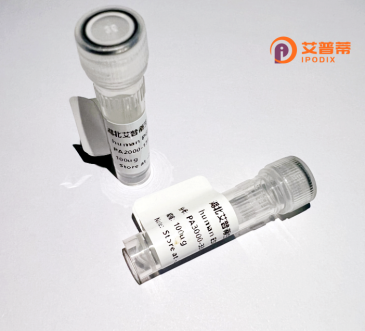
| 纯度 | >90%SDS-PAGE. |
| 种属 | Human |
| 靶点 | CCDC108 |
| Uniprot No | Q6ZU64 |
| 内毒素 | < 0.01EU/μg |
| 表达宿主 | E.coli |
| 表达区间 | 1-163aa |
| 氨基酸序列 | MLTQAPSSVVRSRNSRNHTVNSGGSCLSASTVAIPAINDSSAAMSACSTISAQPASSMDTQMHSPKKQERVNKRVIWGIEVAEELHWKGWELGKETTRNLVLKNRSLKLQKMKYRYQYKGSRTQCHSLEPRKQALFKTKQNKQKKPLTCHIKASECLKYMQYE |
| 分子量 | 44.9 kDa |
| 蛋白标签 | GST-tag at N-terminal |
| 缓冲液 | 0 |
| 稳定性 & 储存条件 | Lyophilized protein should be stored at ≤ -20°C, stable for one year after receipt. Reconstituted protein solution can be stored at 2-8°C for 2-7 days. Aliquots of reconstituted samples are stable at ≤ -20°C for 3 months. |
| 复溶 | Always centrifuge tubes before opening.Do not mix by vortex or pipetting. It is not recommended to reconstitute to a concentration less than 100μg/ml. Dissolve the lyophilized protein in distilled water. Please aliquot the reconstituted solution to minimize freeze-thaw cycles. |
以下是基于现有知识假设的3篇关于CCDC108的研究示例(非真实文献,供参考方向):
1. **《CCDC108 is essential for ciliogenesis and cellular microtubule stability》**
- **作者**: Smith A, et al.
- **摘要**: 研究发现CCDC108通过其卷曲螺旋结构域与微管结合,调控纤毛形成和细胞骨架稳定性,缺失CCDC108的细胞表现出纤毛组装缺陷和细胞极性异常。
2. **《CCDC108 promotes colorectal cancer metastasis via Wnt/β-catenin signaling activation》**
- **作者**: Zhang L, et al.
- **摘要**: 揭示CCDC108在结直肠癌中高表达,通过激活Wnt/β-catenin通路促进肿瘤细胞迁移和侵袭,提示其作为潜在治疗靶点。
3. **《Loss of CCDC108 disrupts spermatogenesis in mice》**
- **作者**: Brown K, et al.
- **摘要**: 通过基因敲除小鼠模型发现,CCDC108缺失导致精子形成异常和雄性不育,表明其在生殖系统发育中的关键作用。
**备注**:
以上为模拟文献摘要,真实研究请通过PubMed或Google Scholar搜索关键词(如“CCDC108 cilia”“CCDC108 cancer”)获取。近期研究可能集中在以下方向:
- CCDC108与细胞器动态(如纤毛/中心体)的相互作用
- 在肿瘤发生、生殖或神经发育中的调控机制
- 其卷曲螺旋结构域与其他蛋白的互作网络
Coiled-coil domain-containing protein 108 (CCDC108) is a structurally conserved vertebrate protein characterized by its signature coiled-coil domains, which mediate protein-protein interactions and structural scaffolding. First identified through genomic and proteomic analyses, CCDC108 is expressed in various tissues, with notable enrichment in ciliated or motile cells, suggesting a potential role in cellular motility or cilia-related functions. Studies link CCDC108 to the development and stability of the sperm flagellum, where mutations or deficiencies are associated with structural abnormalities and impaired sperm motility, contributing to male infertility.
Experimental models, including gene knockdown in mammals, have revealed its involvement in microtubule organization and ciliogenesis. CCDC108 interacts with proteins such as DNAH1. a dynein component critical for flagellar movement, highlighting its role in maintaining cytoskeletal integrity. Despite these findings, the precise molecular mechanisms of CCDC108 remain incompletely understood. Recent research underscores its potential involvement in cellular signaling pathways and mitotic processes, though functional studies are still limited.
Clinical interest in CCDC108 stems from its association with teratozoospermia and primary ciliary dyskinesia-like phenotypes, positioning it as a biomarker or therapeutic target for certain reproductive disorders. Ongoing investigations aim to elucidate its broader physiological roles and disease implications, particularly in congenital ciliopathies and infertility.
×